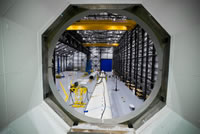Making the switch: should the oil industry be moving into offshore wind?
 Offshore Technology: The oil & gas and renewables industries are often described as a dichotomy, the old way versus the new, the dirty versus the clean. In reality, from a technical and engineering standpoint, there are many areas of overlap, particularly in countries such as the UK, where a majority of renewable and non-renewable assets are located offshore.
Offshore Technology: The oil & gas and renewables industries are often described as a dichotomy, the old way versus the new, the dirty versus the clean. In reality, from a technical and engineering standpoint, there are many areas of overlap, particularly in countries such as the UK, where a majority of renewable and non-renewable assets are located offshore.
Building an oil rig in the North Sea is not all that different to setting up a wind farm. Both jobs require the ability to negotiate choppy waters and bad weather (often using remotely operated vehicles), and the technology to drill or pile foundations into the seabed. Communications and cabling infrastructure present a big challenge in both instances, as do the logistics of transporting and arranging huge components such as derricks and blades. Cont'd...
Comments (0)
This post does not have any comments. Be the first to leave a comment below.
Featured Product

